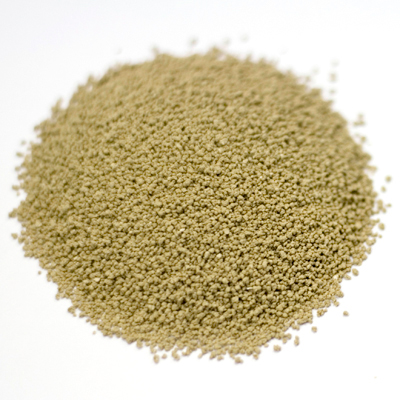Phosphate Rock
Phosphate Rock
Phosphorite, phosphate rock or rock phosphate is a non-detrital sedimentary rock which contains high amounts of phosphate minerals. The phosphate content of phosphorite (or grade of phosphate rock) varies strongly, from 4%[1] to 20% phosphorus pentoxide (P2O5). Marketed phosphate rock is enriched ("beneficiated") to at least 28%, often more than 30% P2O5. This occurs through washing, screening, de-liming, magnetic separation or flotation.[1] By comparison, the average phosphorus content of sedimentary rocks is less than 0.2%.[2] The phosphate is present as fluorapatite Ca5(PO4)3F typically in cryptocrystalline masses (grain sizes < 1 μm) referred to as collophane-sedimentary apatite deposits of uncertain origin.[2] It is also present as hydroxyapatite Ca5(PO4)3OH or Ca10(PO4)6(OH)2, which is often dissolved from vertebrate bones and teeth, whereas fluorapatite can originate from hydrothermal veins. Other sources also include chemically dissolved phosphate minerals from igneous and metamorphic rocks. Phosphorite deposits often occur in extensive layers, which cumulatively cover tens of thousands of square kilometres of the Earth's crust.[3]
Phosphate rock is mined, beneficiated, and either solubilized to produce wet-process phosphoric acid, or smelted to produce elemental phosphorus. Phosphoric acid is reacted with phosphate rock to produce the fertilizer triple superphosphate or with anhydrous ammonia to produce the ammonium phosphate fertilizers. Elemental phosphorus is the base for furnace-grade phosphoric acid, phosphorus pentasulfide, phosphorus pentoxide, and phosphorus trichloride. Approximately 90% of phosphate rock production is used for fertilizer and animal feed supplements and the balance for industrial chemicals.

